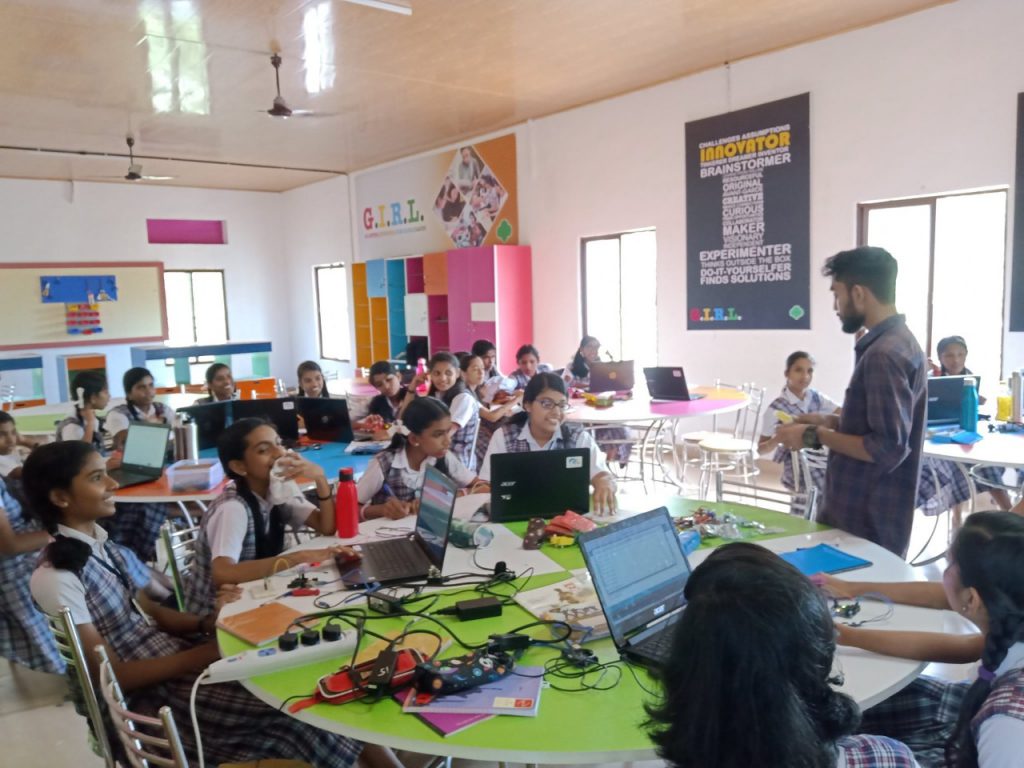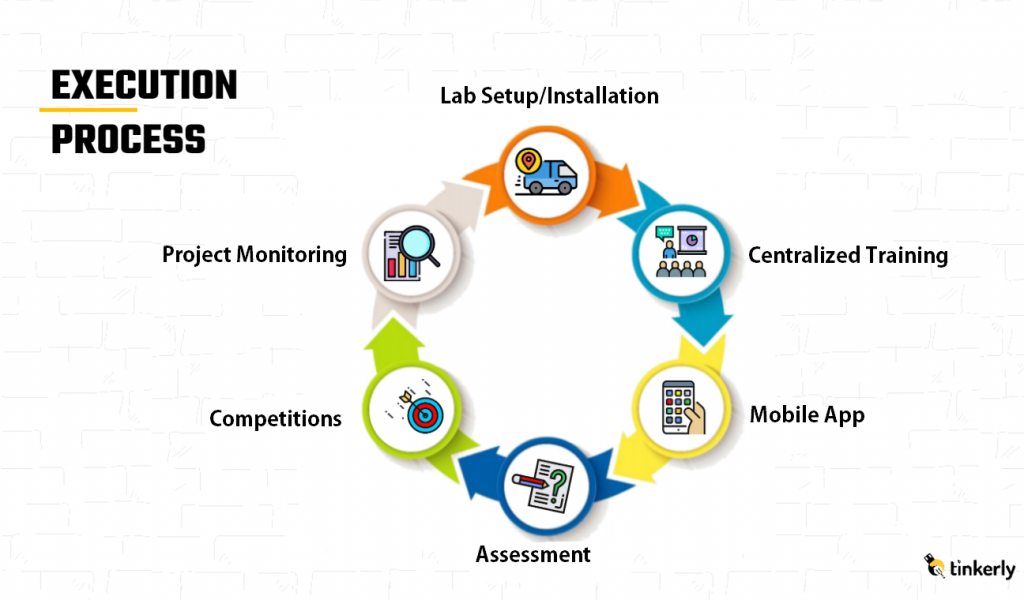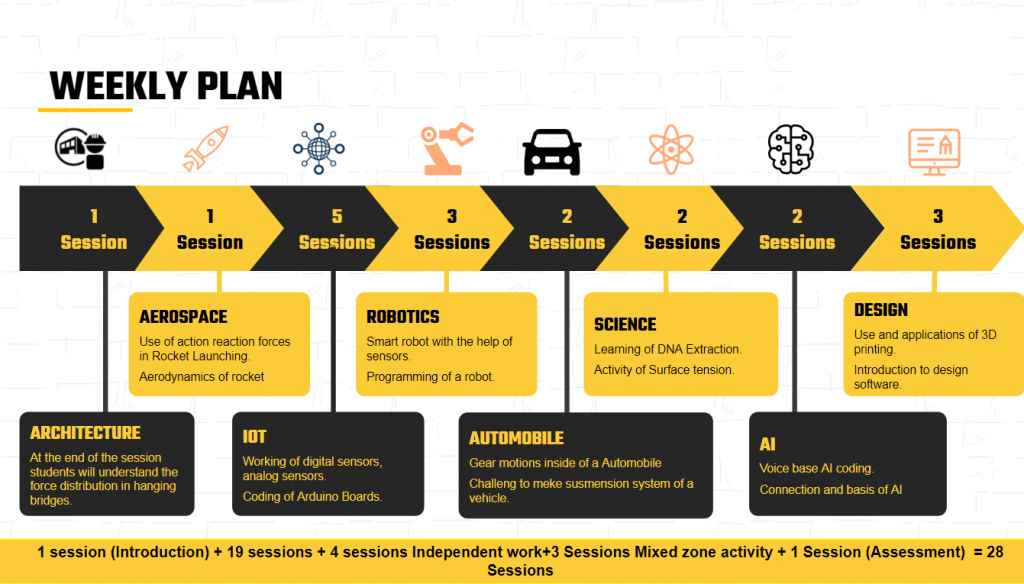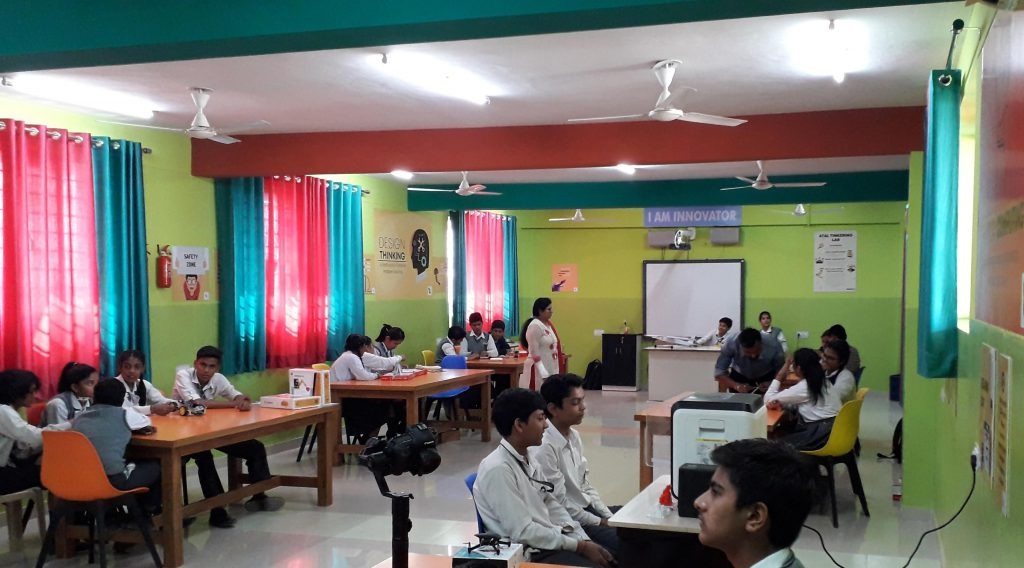Tinkerly offers you a specially curated Tinkering lab for schools that are based on 8 different Tech-Zones. Each of the 8 zones consists of multiple recreational learning kits and STEM activities that enable students to enhance their skills and become future-ready. The Tinkerly’s Tinkering lab or Robotics lab offers grade-wise offerings for Grades 3 to 5, Grade 6 to 8, and Grade 9 to 10th respectively.

A Tinkering lab or STEM lab or Robotics lab is a maker lab in schools that fosters scientific temper in young minds by giving them an opportunity to learn, create, and experiment with the objects. This lab promotes the hands-on learning approach and sparks our young generation’s interest in STEM from an early age. It helps students understand the practical aspects of things and make them future-ready by teaching them scientific concepts in a fun and interactive manner.
Tinkerly’s Tinkering Lab(TTL) or Robotics Lab includes:
- Educational Kits or 8 different skill zones
- Challenge Cards driven projects
- Content with Computational Thinking
- Dedicated Mobile Application
- Online Support and Troubleshooting
- School Benchmarking
How Many Zones Are There In Tinkerly’s Tinkering Lab For School?
1. Architecture Zone:
In this zone, the students will get a chance to learn about the various types of structural designs that are involved in civil engineering projects.
2. Aerospace Zone:
In the Aerospace zone, the students will gain knowledge of hands-on exposure of rocket design, launching, basic flying along with the design of Aircraft and drones.
3. IoT Zone:
In this zone, the students will acquire knowledge about various types of sensors, boards, basic programming, algorithm building etc. to develop live real-life projects by using the application of IoT(Internet of Things).
4. Robotics Zone:
The students will gain knowledge of how to control a robot, robo-coding, humanoid, and interesting arena-based challenges. It will help them to prepare for various competitions.
5. Science DIY Zone:
This zone is based on experiential learning of curriculum-based science concepts via easy Do-It-Yourself activities, Mini Junior Science lab, and other special activities which are developed by Tinkerly.
6. Automobile Zone:
In this zone, the students will learn to develop Gear systems, suspension systems along with gaining a basic understanding of various automobile motions like linear, circular, etc. along with programming.
7. Rapid Prototyping Zone
This zone gives an introduction to the world of Rapid prototyping via the application of the 3D printer, designing software, and undertaking many more interactive and creative activities.
8. AI Zone
In the AI Zone, the students will acquire knowledge about the basic concept of AI and machine learning.
What Is The Execution Process Of The Tinkering Lab In Schools?
Given below is the step-by-step diagram that will show you the entire execution process of the Tinkering lab:

What Is The Main Purpose Of Tinkering Lab In Schools?
The main purpose of Tinkering Lab or STEM Lab or Robotics lab in school is to give students an opportunity to work with tools and equipment that will teach them 21st-century skills. The students will be able to understand the What, How, and Why aspects of STEM. With the help of this lab, the students will foster their curiosity and enhance their creativity. They will be able to bring their innovative ideas to life and learn valuable skills such as computational thinking, adaptive learning, problem-solving, design mindset, and physical computing, etc.
They will also acquire knowledge of innovative technologies like AI(Artificial Intelligence), IoT(Internet of Things), and robotics.
What Are The Various Components Of The Tinkering Lab?
The Tinkering lab consists of the following components as mentioned down below:
- Training Boot Camp
- User Manuals
- Mobile Application (Let’s Tinker App)
- Projects Monitoring
- Competition
- Impact & Regular Assessment
- Teaching Aids
- Science DIY Kits
What Will Be The Weekly Plan For The Tinkering Lab?
There are 28 sessions in the Tinkering lab. A brief description of each of these sessions is depicted in the diagram given down below:

How Does The Tinkering Lab Differ From The Science Lab In Schools?
The Tinkering labs differ from science labs in many ways. Some of these differences are listed down below:
1. Science labs are designed for the purpose of guided experimenting, whereas the Tinkering lab is designed for the purpose of open-ended experimenting with no single solution.
2. The activities in the Science labs are based on the academic topics in the textbooks. On the other hand, the Tinkering lab activities are based on real-life scenarios that teach students valuable 21st-century skills and make them future-ready.
3. Science labs are based on a fixed curriculum. On the other hand, Tinkering labs uses a directional curriculum that is not restrictive to a fixed curriculum. It provides young minds with the scope to create and innovate by using necessary tools and equipment.
4. The Science lab tools and equipment are expensive and fragile. The tools and equipment used in the Tinkering labs are appropriate to the age of the intended student. In this way, they can carry out experimentation without the fear of damaging the equipment.

Conclusion
We have discussed the advantages offered by the Tinkering lab in schools and how it will turn your child into an innovator of tomorrow. To know more about how to get a Tinkering lab for your school, please click here.
Are you interested in Atal Tinkering Lab instead? If so, then click here
 21162
21162


